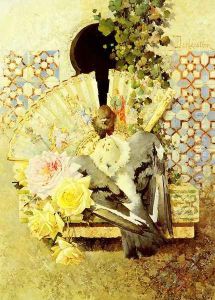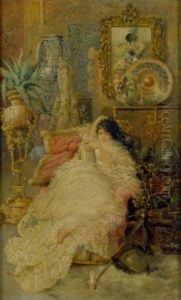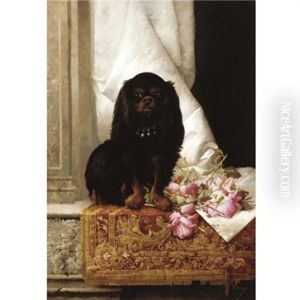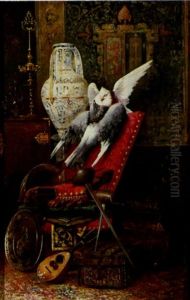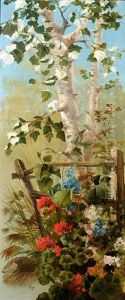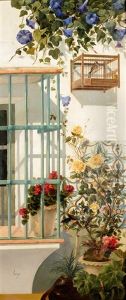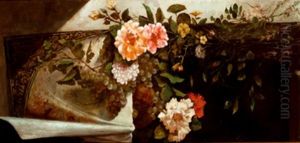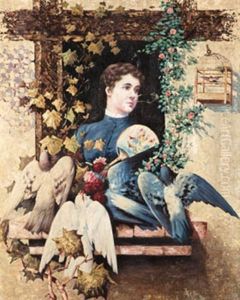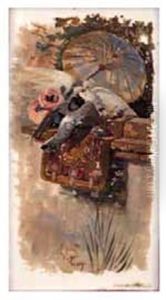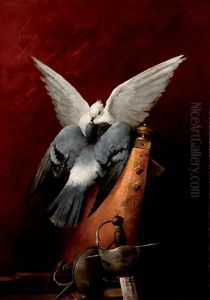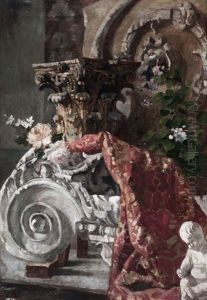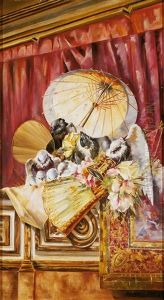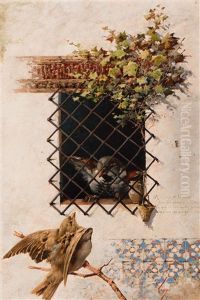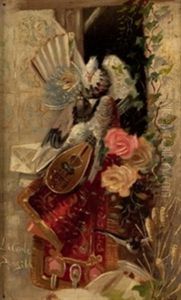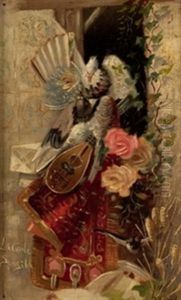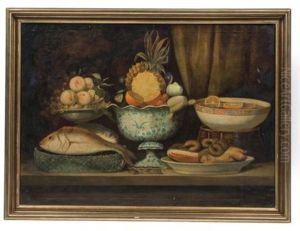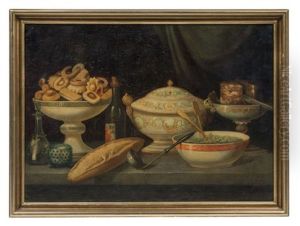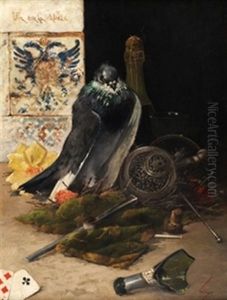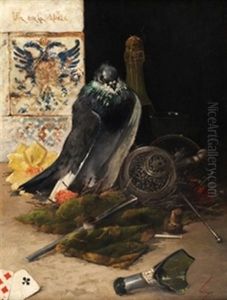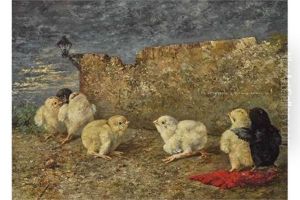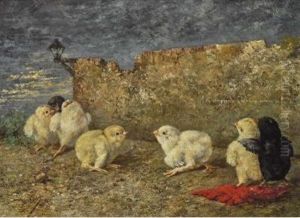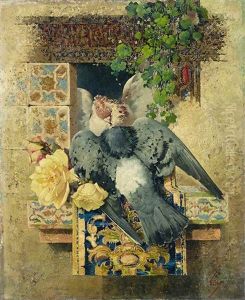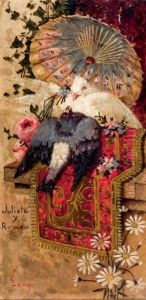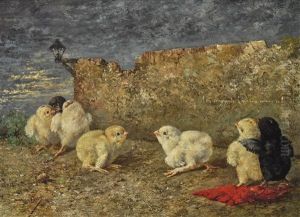Horacio Lengo y Martinez Paintings
Horacio Lengo y Martínez was a Spanish painter born in Málaga, Spain, on November 22, 1838. He developed an interest in art early in life and initially studied under the tutelage of his father, who was also a painter. His early works were influenced by the artistic environment in Málaga and the teachings of his father, but Lengo was eager to expand his horizons, which led him to move to Madrid.
In Madrid, Lengo furthered his artistic education at the Real Academia de Bellas Artes de San Fernando, one of the most prestigious art institutions in Spain. Here, he was exposed to a more rigorous academic training and studied under the guidance of Federico de Madrazo, a well-regarded painter of the time. Lengo's style was primarily influenced by the academic realism of the 19th century, and he became known for his meticulous approach to painting and his skill in capturing detail.
While Lengo's work included religious themes and portraits, he is particularly noted for his landscapes and scenes of everyday life. His landscapes often depicted the Spanish countryside, and he had a particular talent for rendering the effects of light and atmosphere, which added a sense of realism and vitality to his paintings. His genre scenes, on the other hand, captured the customs and traditions of Spanish life, reflecting the romantic interest in national identity that was prevalent among artists and intellectuals of his era.
Throughout his career, Lengo achieved recognition and was awarded several honors. His work was exhibited in numerous art exhibitions, including the National Exhibition of Fine Arts (Exposición Nacional de Bellas Artes) in Spain, where he received accolades for his contributions to Spanish art.
Unfortunately, Horacio Lengo y Martínez's life was cut short when he died on October 30, 1890, in Madrid. Despite his relatively brief career, his paintings remain a testament to the skill and dedication of a 19th-century Spanish artist who was able to capture the essence of his time and place with great sensitivity. Today, his works can be found in various museums and private collections, appreciated by those who have an interest in the art history of Spain.
